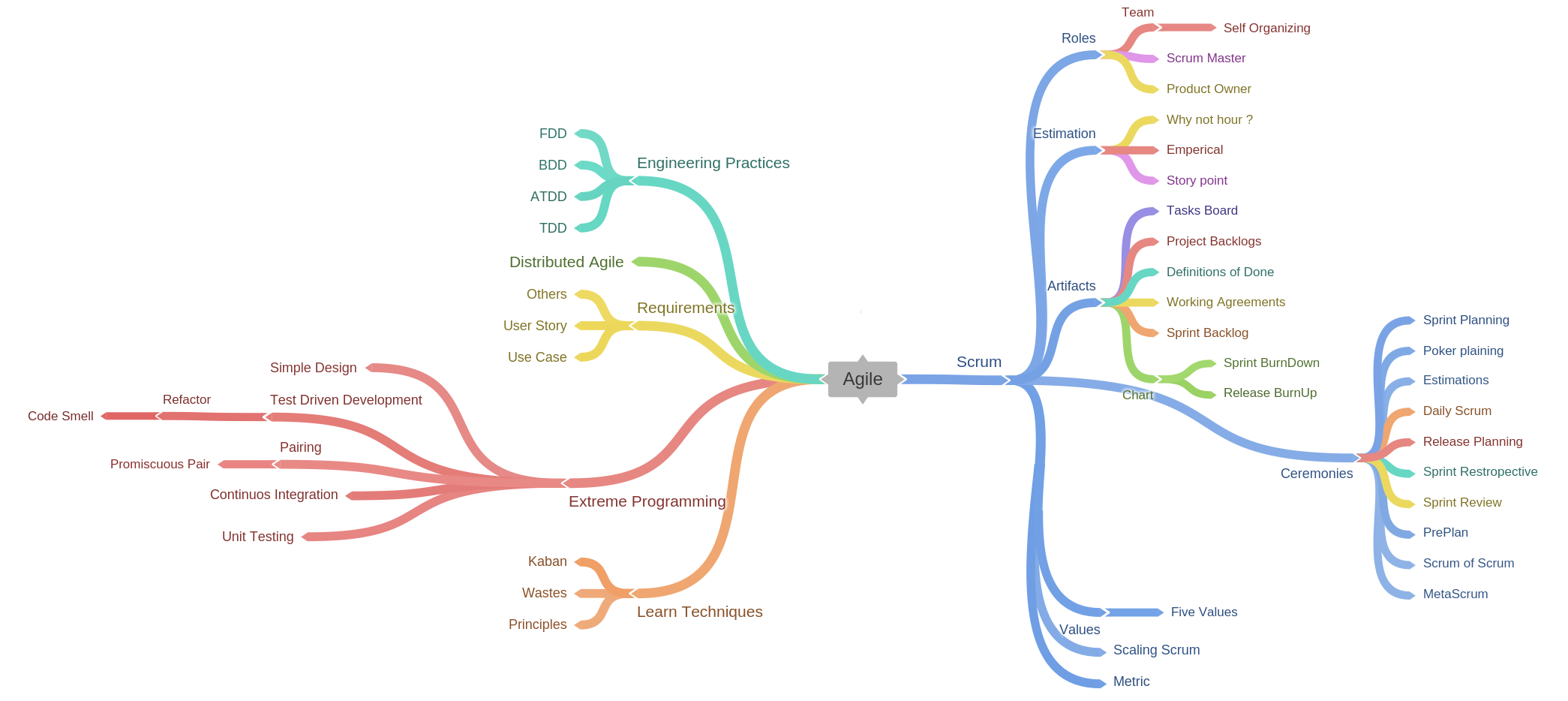Agile Introduction
What is Agile?
Agile is a methodology for software development that uses iterative and incremental approaches to deliver functional software. It emphasizes adaptability, customer collaboration, and continuous improvement. Unlike traditional methods, Agile prioritizes the delivery of smaller, functional pieces of software, enabling teams to adapt quickly to feedback and changes.
Key elements of agile are:
- Flexibility in planning and execution.
- Close collaboration among stakeholders.
- Continuous delivery of functional software increments.

History of Agile:
The Agile methodology emerged in the early 2000s as a response to challenges with traditional project management methods like the Waterfall model, which often resulted in delayed projects, cost overruns, and products that didn’t meet customer needs.
Key Milestones of agile are:
- 1980s-1990s: Early Iterative Models - Incremental approaches like Scrum, Extreme Programming (XP), and Rational Unified Process (RUP) started gaining traction.
- 2001: Agile Manifesto - A group of 17 software developers, frustrated with the rigidity of traditional methods, met in Utah and created the Agile Manifesto.
The Manifesto focuses on 4 values:
- Individuals and interactions over processes and tools.
- Working software over comprehensive documentation.
- Customer collaboration over contract negotiation.
- Responding to change over following a plan.
It also outlines 12 principles, which emphasize customer satisfaction, simplicity, and adaptability.
Core Principles of Agile
Agile is guided by the principles outlined in the Agile Manifesto:
- Customer Satisfaction Through Early and Continuous Delivery: Agile focuses on delivering functional software early in the development process to address customer needs promptly.
- Welcome Changing Requirements: Agile embraces change, even late in the development cycle, to ensure the product remains relevant.
- Frequent Delivery of Working Software: Deliver software increments frequently (e.g., every two weeks) for early feedback and iteration.
- Collaboration Between Business and Development Teams: Agile encourages constant communication between stakeholders and developers to ensure alignment.
- Motivated and Empowered Individuals: Teams are empowered to make decisions, fostering innovation and accountability.
- Face-to-Face Communication: Prefer direct communication to ensure clarity and reduce misunderstandings.
- Sustainable Development: Maintain a consistent pace of work to avoid burnout and ensure long-term productivity.
- Continuous Attention to Technical Excellence: Agile emphasizes quality through practices like test-driven development (TDD) and continuous integration.
- Simplicity: Focus on delivering the simplest solution that meets the requirements.
- Self-Organizing Teams: Teams decide how to organize and execute their tasks without micromanagement.
- Reflection and Adaptation: Regular retrospectives allow teams to learn and improve continuously.
Agile Methodologies
Agile encompasses several methodologies, each with its specific practices but aligned with Agile principles:
- Scrum: Focuses on iterative work cycles called sprints (typically 2-4 weeks). Defined roles: Product Owner, Scrum Master, Development Team. Key ceremonies: Sprint Planning, Daily Standups, Sprint Review, and Retrospective.
- Kanban: Visualizes work on a board to improve workflow. Focuses on limiting work in progress (WIP) to enhance efficiency. Emphasizes continuous delivery without fixed iterations.
- Extreme Programming (XP): Focuses on engineering practices for technical excellence. Practices include pair programming, TDD, and frequent releases.
- Lean Software Development: Aims to deliver value by eliminating waste. Prioritizes continuous improvement and respect for people.
Advantages:
- Customer Satisfaction: Continuous delivery of valuable features ensures that customer needs are met promptly.
- Adaptability: Agile allows teams to respond to changing requirements effectively.
- Faster Time-to-Market: Incremental delivery speeds up the time it takes to deliver functional parts of the product.
- Improved Quality: Continuous testing and iterative refinement enhance the overall quality of the product.
- Enhanced Collaboration: Daily stand-ups and close team collaboration improve communication.
- Risk Reduction: Early and frequent deliveries allow for faster identification and mitigation of risks.
Disadvantages:
- Scope Creep: Frequent changes can lead to a lack of clarity about the project's scope.
- Lack of Predictability: The flexible nature makes it hard to estimate costs and timelines accurately.
- Requires Experienced Teams: Agile relies heavily on the team's skills, discipline, and ability to self-manage.
- Documentation Deficiency: The focus on working software can lead to insufficient documentation.
- Not Ideal for Large Teams: Coordination in large teams can be challenging without proper scaling frameworks like SAFe.
- Dependency on Customer Availability: Agile requires constant customer feedback, which may not always be feasible.
